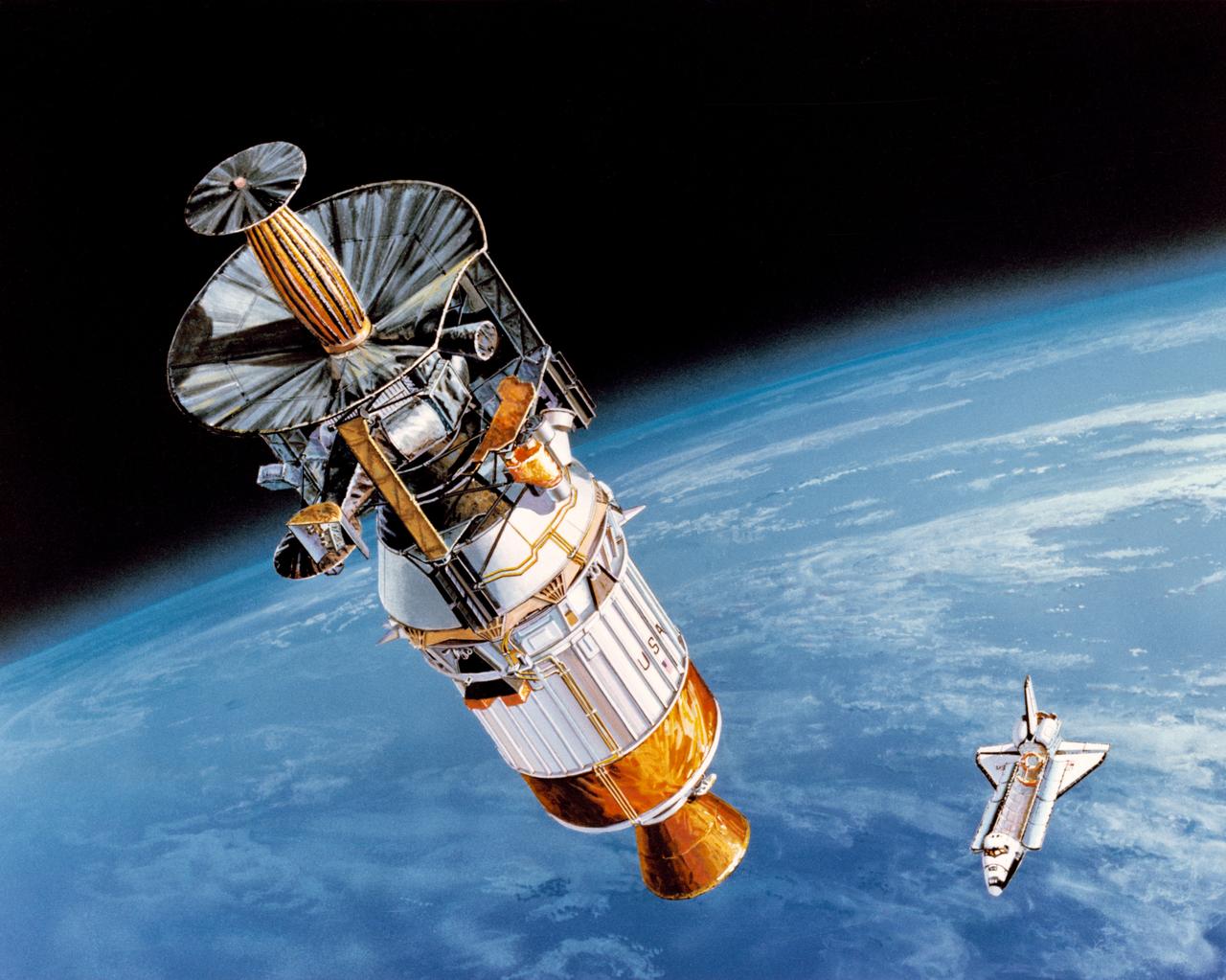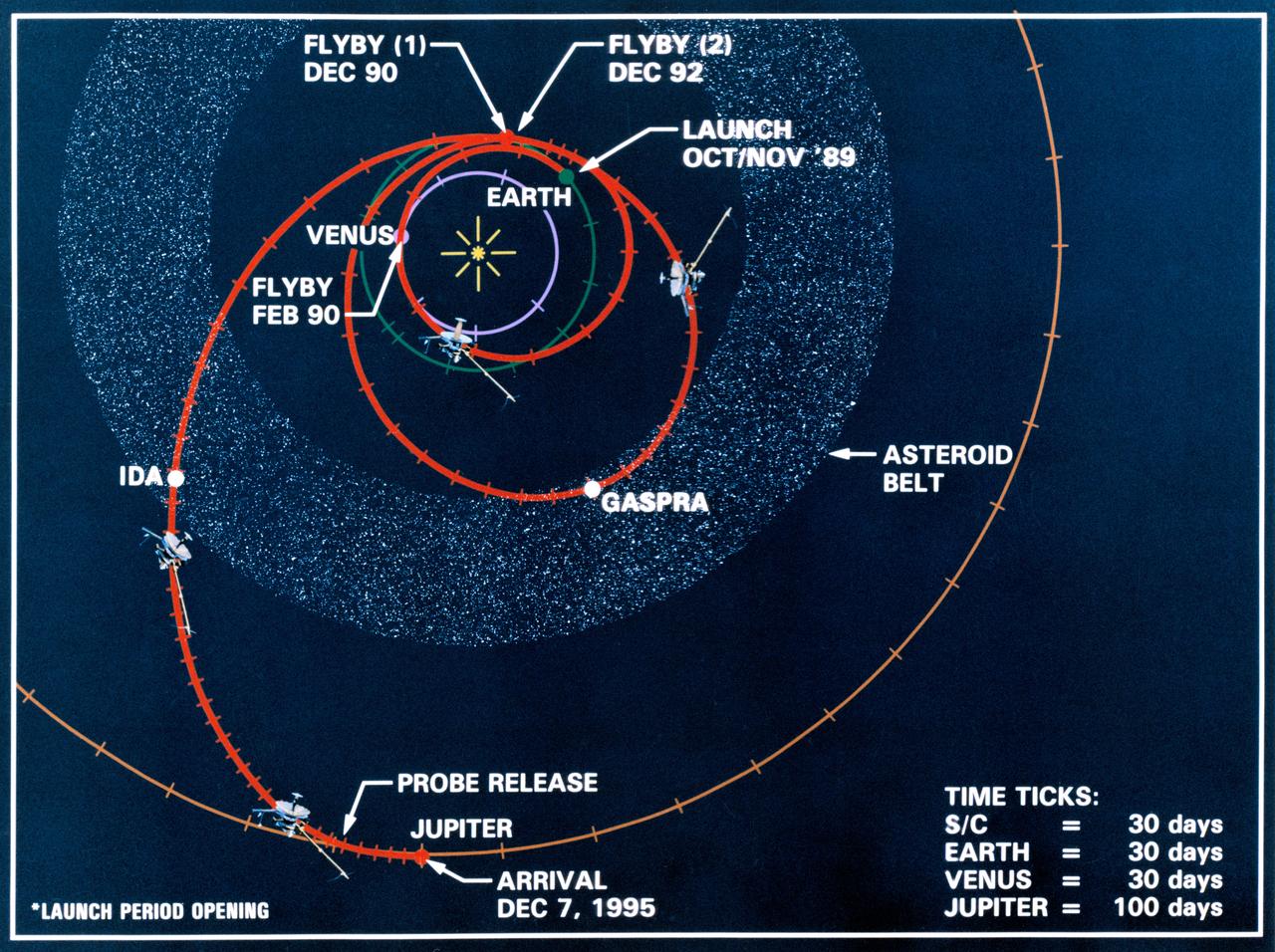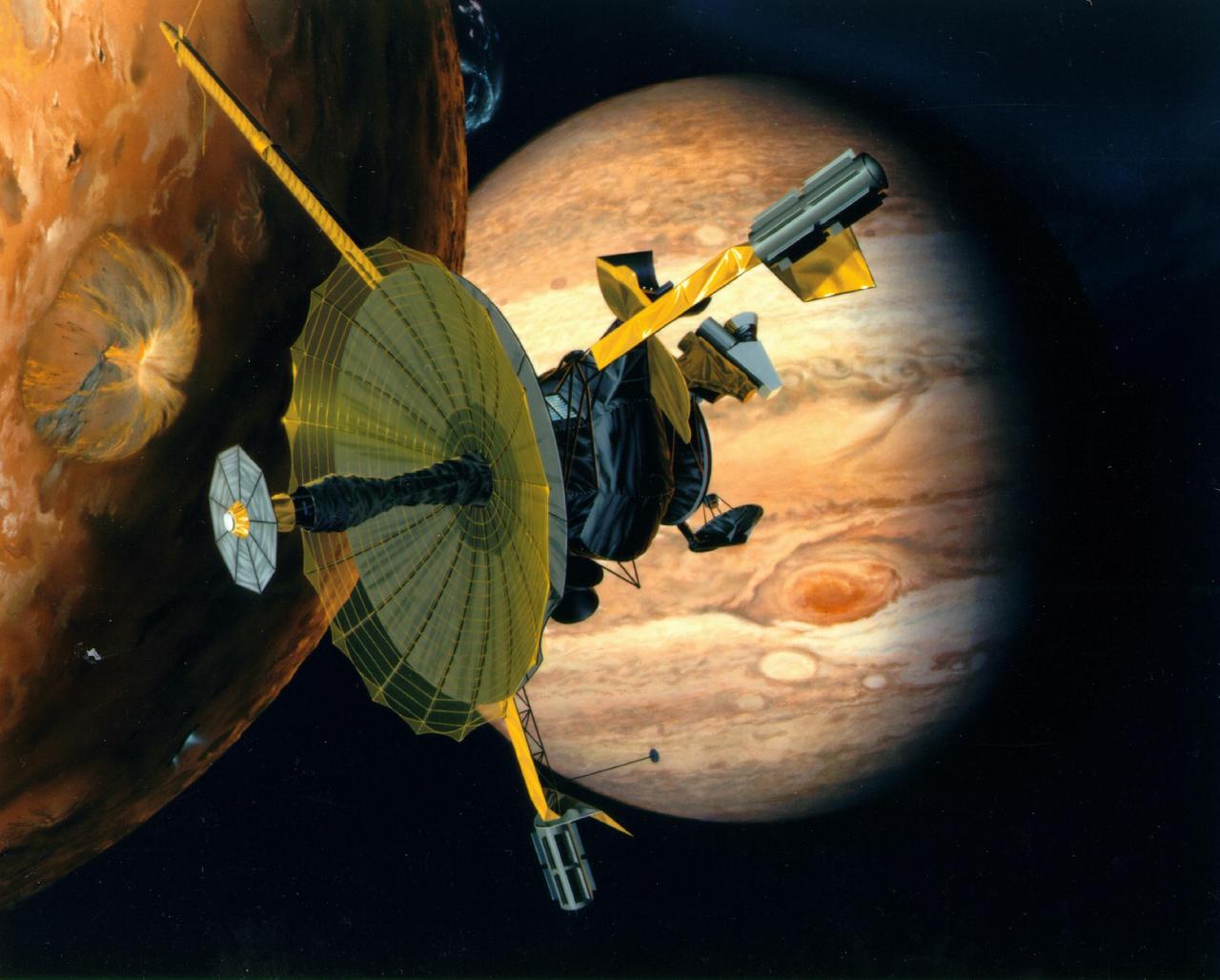Galileo – The First To Orbit Jupiter
Revealing Jupiter’s Secrets!
Below you can check out cool facts about the historic Galileo probe and learn about its many discoveries! Galileo was the first probe to orbit Jupiter and to study the solar system’s biggest planet and its fascinating moons. Launched by the Space Shuttle Atlantis, Galileo made flybys of Earth, Venus and two asteroids before witnessing comet Shoemaker-Levy 9 collide with Jupiter in 1994!
Fast Summary Facts About Galileo
- Type: Obiter
- Destination: Jupiter
- Status: Complete
- Launch Weight: 2,562 kgs (5,648 lbs)
- Launch Location: Cape Kennedy, Florida
- Launch Date: October 18th 1989
- Jupiter Arrival: December 8th 1995
- Deorbited: September 21st 2003
- Mission Duration: 13 years, 11 months, 3 days
Interesting Fun Facts About The Galileo Spacecraft!
- The Galileo spacecraft is named after Galileo Galilei who first observed Jupiter through a telescope and discovered its four largest moons in the year 1610!
- The spacecraft was made up of the main orbiter and a decent probe which parachuted through Jupiter’s atmosphere.
- The descent probe entered the Jovian atmosphere at an incredible 47.8 km/s (29.7 mi/s) before slowing and deploying its parachute. The module returned data on Jupiter's atmospheric conditions and composition before being crushed by intense pressure.
- Galileo was launched, and deployed, by the Space Shuttle Atlantis. The spacecraft's solid-fuel booster then powered the probe towards Venus for its first gravity boost as the probe was too heavy to launch directly towards Jupiter!
- The scientist working for NASA and the Jet Propulsion Laboratory (JPL) which built the spacecraft, communicated with the probe via the Deep Space Network.
- The Galileo orbiter was powered by two small nuclear generators called RTGs. The power they produce is smaller than a typical toaster in your kitchen!
- There was 7.8 kilograms (17.2 pounds) of Plutonium in each RTG! Learn more about how scientist power space probes.
- Enroute to Jupiter the spacecraft would flyby Venus and Earth for gravity assists (to increase its speed by 11.1 km/s) while also flying by the unexplored asteroids 951 Gaspra and 243 Ida!
- When Galileo flew by asteroid Gaspra and Ida it became the first spacecraft to visit an asteroid and the first to discover an asteroid moon (Ida's moon Dactyl)!
- Galileo was also lucky to be near Jupiter to view comet Shoemaker-Levy 9 colliding with Jupiter!
- Five previous space missions have flown by Jupiter (Pioneer 10&11, Voyager 1, Voyager 2 and Ulysses), Galileo will be the first to enter orbit.
- After being released towards the gas giant, the decent probe entered Jupiter's atmosphere travelling 170,600 kph (106,000 mph). At that speed, you could drive from Los Angeles to New York in 90 seconds!
- The Galileo orbiter completed 35 orbits over nearly 8 years exploring the Jovian system.
- To avoid the possibility of Galileo impacting one of Jupiter’s moons and contaminating it with Earthly bacteria, the spacecraft was intentionally crashed into the gas giant. Galileo impacted Jupiter at a speed of 173,700 km/h (108,000 mph)! This is the fastest impact speed ever achieved by a space probe!
- Galileo dramatically improved our knowledge (and returned some amazing images) about Jupiter and its largest moons; Ganymede, Callisto, Io, Europa and Amalthea.
- The Juno spacecraft is the latest mission to visit and orbit Jupiter. Future missions called the ‘Jupiter Icy Moons Explorer’ and ‘Europa Clipper’ are planned to launch in the early 2020’s!




Galileo
Galileo Flybys Venus
Orbital path of Galileo
Galileo spacecraft



